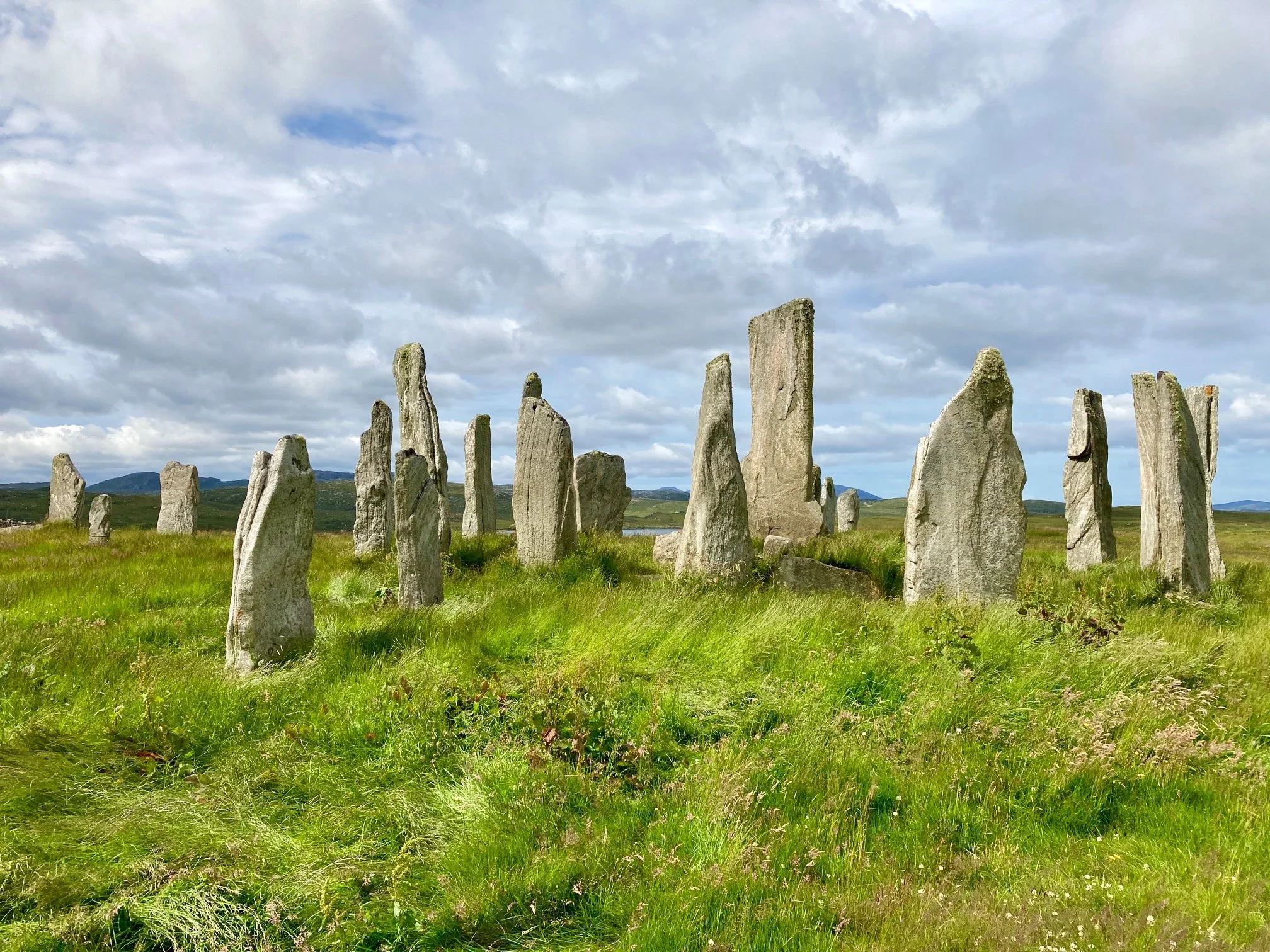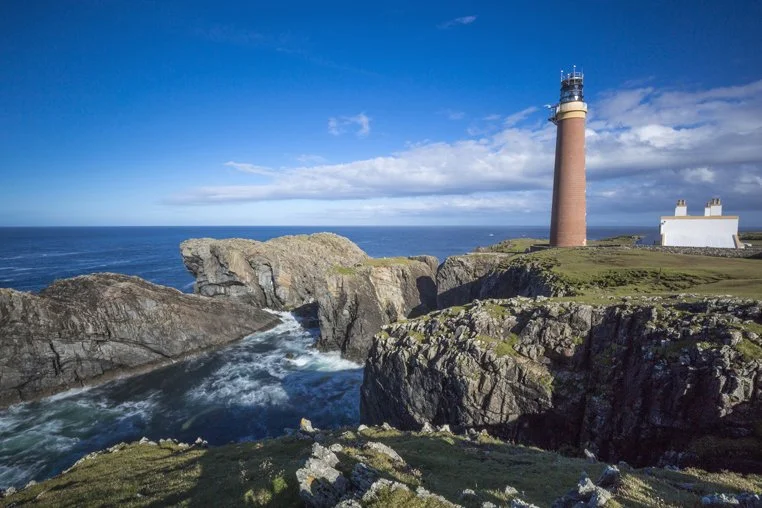The Isle of Lewis
The Isle of Lewis, the largest island in the Outer Hebrides, is a land of ancient history, vast skies, and windswept beauty. Its rugged moorlands, dramatic cliffs, and timeless monuments tell the story of island life across the ages. A day trip from Harris offers a journey through millennia — from Neolithic stone circles to crofting villages and remote Atlantic beaches.
The Callanish Standing Stones are among Scotland’s most awe-inspiring prehistoric sites. Erected some 5,000 years ago, these ancient monoliths rise from the moor like guardians of time, their mystery and quiet power undiminished by centuries of wind and weather.
A short drive from Callanish, Dun Carloway Broch stands proudly above Loch Carloway. Built around 100 BC, this Iron Age stone tower is one of the best-preserved examples in Scotland and offers panoramic views of the island landscape.
At Garenin (Gearrannan), the restored blackhouse village brings the island’s crofting past vividly to life. Wander through traditional stone cottages with thatched roofs and learn how generations of islanders lived and worked in this remote community.
The Arnol Blackhouse, preserved by Historic Environment Scotland, offers a rare glimpse into daily life in a traditional Hebridean home. Inside, the peat fire still burns — its scent evoking centuries of warmth, labour, and family stories.
At the northern tip of the Outer Hebrides, the Butt of Lewis lighthouse stands sentinel over crashing waves and soaring seabirds. It’s a dramatic and exhilarating place — the true edge of the Atlantic.
Connected to Lewis by a small bridge, Great Bernera is a tranquil island rich in archaeological sites and natural beauty. Its highlight, Bosta Beach, is a perfect arc of white sand set against turquoise waters. Here, you can visit a reconstructed Iron Age house and imagine how islanders once thrived in this windswept yet sheltered bay.
On the west coast, Uig Sands stretches out in wide golden curves beneath steep hills. This is where the famous Lewis Chessmen were discovered, buried in the sand centuries ago. Today it remains a place of beauty, solitude, and shifting light.
Useful Links
Visit Outer Hebrides – Isle of Lewis Guide – Maps, highlights, and travel information.
Callanish Stones Visitor Centre – History, tours, and visitor information.
Dun Carloway Broch (Historic Environment Scotland) – Iron Age site and walking routes.
Garenin Blackhouse Village (Gearrannan) – Restored crofting village and museum.
Arnol Blackhouse (Historic Environment Scotland) – Traditional Hebridean home.
Great Bernera & Bosta Beach – Walks, history, and Iron Age reconstruction.
WalkHighlands - Butt of Lewis Circuit – Butt of Lewis walk and lighthouse viewpoints.
WalkHighlands - Uig Sands – Beach walk and Lewis Chessmen site.






